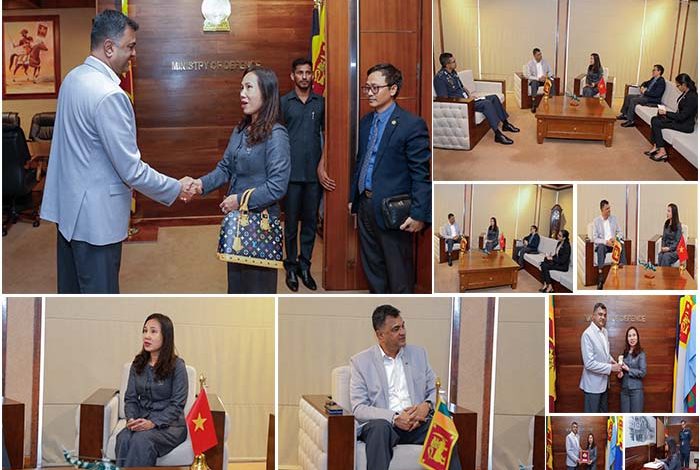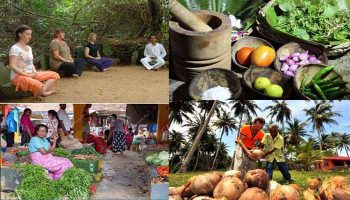Beneath the Canopy of Peace: A Dialogue Carved in Cultural Light

On the tranquil morning of June 18, within the dignified halls of Sri Lanka’s Ministry of Defence, a meeting took place that resonated far beyond the formalities of protocol. Her Excellency Mrs. Trinh Thi Tam, Ambassador of the Socialist Republic of Vietnam to Sri Lanka, arrived with the quiet dignity befitting a steward of long-standing friendship. She paid a respectful courtesy call on Defence Secretary Air Vice Marshal Sampath Thuyacontha (Retd), marking another luminous moment in the rich tapestry of bilateral relations.
Their dialogue unfolded beneath a metaphorical canopy—a canopy woven from centuries of shared spiritual and cultural heritage, illuminated by the gentle yet enduring light of Buddhism. This sacred connection, deeply rooted in both nations’ histories, has long nurtured a unique bond that transcends politics, embodying a profound sense of mutual respect and understanding.
As they reflected on these enduring ties, the Ambassador and the Defence Secretary acknowledged the power of cultural and religious heritage as a cornerstone of diplomatic relations. Their conversation was a weaving of past and future, acknowledging the spiritual kinship that nurtures trust while looking forward to new avenues of cooperation.
Beyond the reverence for tradition, the discussion explored practical prospects for deepening collaboration across multiple sectors, affirming the unwavering commitment of both Sri Lanka and Vietnam to strengthen diplomatic engagement. This shared vision promises not only to enhance bilateral ties but also to contribute meaningfully to regional harmony and global peace.
In closing, the Defence Secretary expressed sincere appreciation for the Ambassador’s visit, reiterating Sri Lanka’s readiness to continue fostering a partnership that honors history while embracing the promise of tomorrow. This encounter, quiet in demeanor yet rich in significance, stands as a testament to how diplomacy, when carved in the light of culture and faith, can build bridges that endure beneath the canopy of peace.






